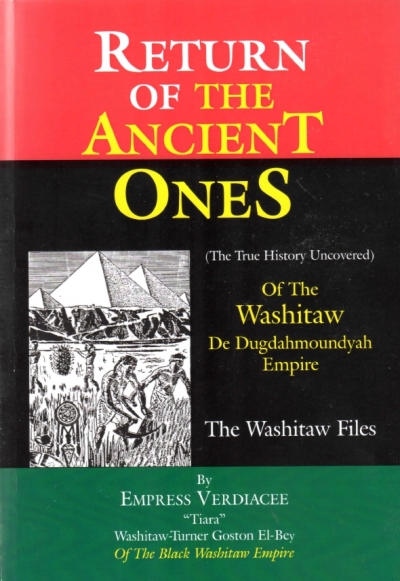by: Mark Pitcavage
July 18, 2016
After authorities identified Gavin Eugene Long as the man who shot and killed three police officers from Baton Rouge and East Baton Rouge on July 17, unconfirmed media reports claimed that Long (who also used the name Cosmo Setepenra) had connections with the anti-government extremist sovereign citizen movement.
Sovereign citizens believe that a conspiracy subverted and replaced the original U.S. government with an illegitimate “de facto” government, but that people can take steps to divorce themselves from the illegitimate government, after which its laws, taxes, regulations and courts have no more authority over them.
These rumors were soon confirmed—though it is clear that Long’s beliefs also extend far beyond the sovereign citizen movement into other areas as well—with the Kansas City Star unearthing sovereign citizen documents filed by Long that indicated an affiliation with the “Washitaw Nation,” one of many concepts associated with the so-called “Moorish movement,” or “Moorish sovereign movement,” an offshoot of the sovereign citizen movement that combines longstanding sovereign citizen beliefs and tactics with some newer, primarily Afrocentric notions.
Moorish sovereign citizens emerged in the mid-1990s on the East Coast when some people began to merge sovereign citizen ideas with some of the beliefs of the Moorish Science Temple, a religious sect dating back to 1913. As sovereign citizen notions attracted more Moorish Science Temple adherents, the Moorish sovereign movement was born. While still retaining most “traditional” sovereign citizen pseudo-historical and pseudo-legal theories, Moorish sovereigns added new ideas, including the notion that African-Americans had special rights because of a 1780s treaty with Morocco, as well as the belief that African-Americans were descended from African “Moors”—and often as well the belief that African-Americans were also a people indigenous to the Americas.
Through the late 1990s and early 2000s, the Moorish sovereign citizen movement grew, generating a large number of groups and gurus to promote Moorish sovereign ideas, it also absorbed other black sovereign groups that had begun independently. The most important of these was the Washitaw Nation, which began in the mid-1990s in Louisiana, started by the “Empress” Verdiacee “Tiara” Washitaw-Turner Goston El-Bey, who claimed to head the Washitaw Empire. Washitaw Nation adherents claimed to be descended from the ancient mound-builders of the Mississippi-Missouri Valley and to actually own the Louisiana Purchase.
After the “Empress” retired, the original Washitaw group fell apart, replaced with a variety of different groups and individuals taking up the “Washitaw Nation” mantle. So today there is not just one “Washitaw Nation,” but many, making it one of the most important wings of the Moorish sovereign citizen movement.
Since 2009, the sovereign citizen movement has experienced a major resurgence, including among African-Americans. Both Moorish and non-Moorish sovereign citizen ideas have spread rapidly within the African-American community, aided by social media websites such as YouTube and Facebook. Moorish and non-Moorish sovereign ideas alike have also spread in prisons and jails across the country.
Most sovereign citizens are still white, but in a number of cities with large African-American populations such as Chicago, Detroit, Philadelphia and others, African-Americans now comprise the majority of sovereign citizens. Moorish sovereign citizens can today be found in any area with a substantial African-American population.
Key Attributes of the Moorish Sovereign Citizen Movement
- Moorish sovereign citizens engage in the same criminal activities as “traditional” sovereign citizens do, including crimes of violence (including against police); scams and frauds; and so-called “paper terrorism” tactics, which typically involves the use of various documents and filings to harass, intimidate and retaliate against police officers, public officials, and others.
- There is still much overlap between the Moorish sovereign citizen movement and the Moorish Science Temple (one reason many Moorish sovereigns add the words –El or –Bey to their names), but not all Moorish Science Temple adherents are sovereign citizens and some vocally oppose sovereign beliefs.
- There are also African-American sovereign citizens who do not adopt specifically Moorish sovereign beliefs but only “traditional” sovereign citizen notions.
- Many Moorish sovereign citizens also promote various Afrocentric “New Age” beliefs and concepts.
- Though the Moorish sovereign movement is primarily African-American in composition, there are a few white people associated with Moorish groups. Moreover, Moorish sovereign citizens are not necessarily black separatists nor necessarily connected with other black extremist groups (though there is a small amount of overlap).
- Like traditional sovereign citizens, Moorish sovereign citizens are heavily reliant upon sovereign “gurus,” who come up with and promote the movement’s ideas and tactics. Some prominent Moorish sovereign gurus include Taj Tarik Bey; Abdul Ali Muhammad Bey; Queen Vallahra Renita EL Harre,Bey; Irving “Hendo” Henderson; and Washitaw Nation figures Wendy Farica Washitaw and Fredrix “Joe” Washington (granddaughter and son of the “Empress” Verdiacee), among others. Many Moorish sovereign citizens may also follow “traditional” sovereign gurus; of these, David-Wynn Miller seems to be rather influential among some Moorish sovereigns.











